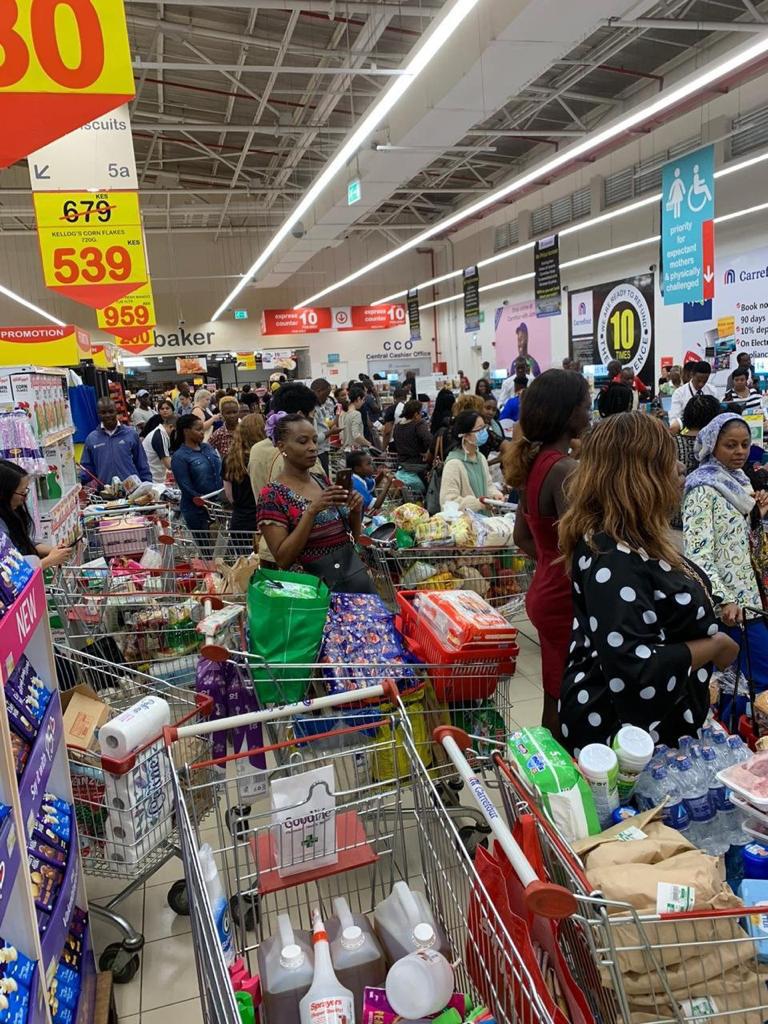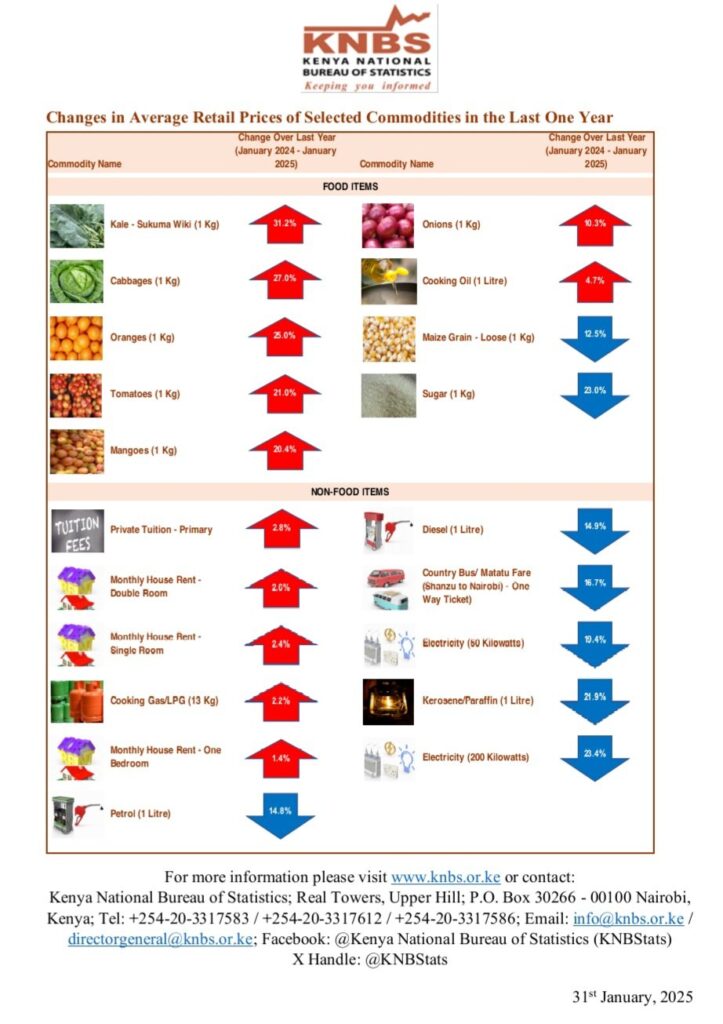
Kenyans are breathing a sigh of relief as the cost of living continues to drop according to the latest report released by the Kenya National Bureau of Standards (KNBS) on 31st January 2025. Through a Consumer Price Indicator (CPI), a key micro-economic indicator for the last one year, it is evident that the prices of crucial and significant consumables used by every person in a single day has gone down a clear indication that the economy might be moving to the right direction.
In its report, KNBS notes that petrol prices have dropped by 14.8%, which is beneficial to motorists and businesses that rely on the fuel. Likewise, diesel prices have also reduced by 14.9%, a change that is likely to bring down the costs of transportation and manufacturing.
Users of public transport will benefit too since the fare for country buses and matatus plying the Shanzu to Nairobi route has gone down by 16.7%. This drop comes as a huge relief to long-distance commuters.
In addition, there is a reduction in the cost of energy, with electricity prices lowered by 19.4% for 50 kilowatts and 23.4% for 200 kilowatts. Families and businesses are most likely to pay less in electricity bills, thus easing financial burden for many households.

The price of kerosene/paraffin, which has undergone a significant drop of 21.9%, is another area of interest. This is advantageous for low-income households that rely on kerosene as a major source of cooking and lighting fuel.
In the food sector, the price of loose maize grain has decreased by 12.5%, which offers some respite in the face of increasing prices of other food commodities. Maize is a basic food item in Kenya and a decrease in its price will serve to protect consumers from high costs of food.
This comes as President William Ruto and his government pump hopes into its citizens with a promise to significantly curb the menace of inflation, cost of living and ensure that the economy is well fit for every individual to work and sustain their daily lives within the Kenyan boarders.
I





![SHA Suspends Dozens of Health Facilities Over Alleged Fraud [LIST]](https://citymirror.ke/wp-content/uploads/2024/12/image-14-218x150.png)

